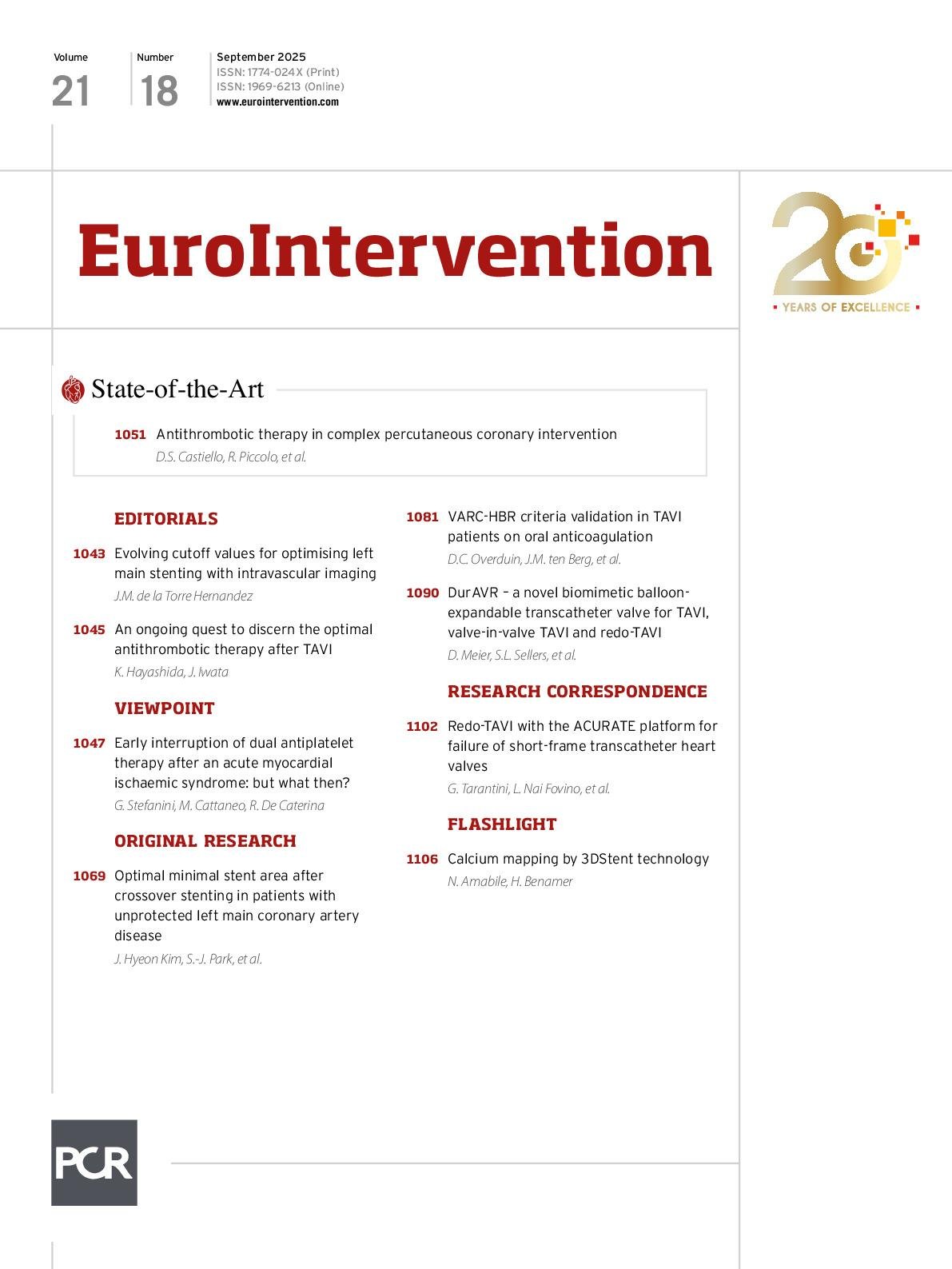Abstract
Background: Intracoronary imaging-guided percutaneous coronary intervention (PCI) has demonstrated clinical benefit over angiography-guided PCI for left main coronary artery (LM) disease. However, the optimal minimal stent area (MSA) thresholds to predict cardiovascular outcomes remain incompletely defined.
Aims: This study aimed to evaluate intravascular ultrasound (IVUS)-measured segmental MSA after LM crossover stenting.
Methods: We identified 829 consecutive patients who underwent IVUS-guided PCI for unprotected LM disease using a single-stent crossover technique. The final MSA was measured at the proximal LM, distal LM, and left anterior descending artery (LAD) ostium. The primary outcome was 5-year major adverse cardiac events (MACE), including all-cause death, myocardial infarction, and target lesion revascularisation.
Results: The MSA cutoff values best predicting 5-year MACE were 11.4 mm² for the proximal LM (area under the curve [AUC] 0.62), 8.4 mm² for the distal LM (AUC 0.58), and 8.1 mm² for the LAD ostium (AUC 0.57). Based on these cutoff values, stent underexpansion in the proximal LM was significantly associated with increased risk of 5-year MACE (adjusted hazard ratio [HR] 2.34; p<0.001). Additionally, patients with simultaneous stent underexpansion in both the distal LM and LAD ostium exhibited a significantly higher risk of 5-year MACE compared with those having adequate expansion or only single-site underexpansion (adjusted HR 2.57; p<0.001).
Conclusions: Achieving sufficient stent expansion in the proximal LM and preventing underexpansion in both the distal LM and LAD ostium are critical for improving long-term clinical outcomes. The identified MSA thresholds may serve as practical benchmarks for stent optimisation during LM PCI.
Sign up for free!
Join us for free and access thousands of articles from EuroIntervention, as well as presentations, videos, cases from PCRonline.com

